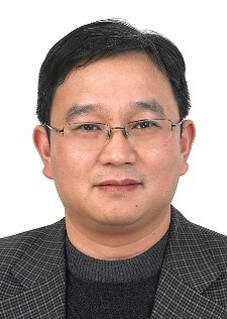
Principal Investigator
Researcher
Email:cswang@sibs.ac.cn
Personal Web:
http://sippe.ac.cn/wangcs/
Key Laboratory of Insect Developmental and Evolutionary Biology, CAS
Chengshu Wang
Personal Profile
Education and academic experiences
1/2007- Professor/Principal Investigator at the Institute of Plant Physiology and Ecology, CAS.
01/2004-12/2006 Research associate (postdoc) at the Department of Entomology, University of Maryland.
07/2001-12/2003 Research associate (postdoc) at the School of Biological Sciences, University of Wales Swansea, UK.
09/1998-07/2001 Ph D in Microbiology, China Agricultural University, Beijing.
09/1993-07/1996 MSc in Plant Protection, Anhui Agricultural University, Hefei.
09/1989-07/1993 BSc in Plant Protection, Anhui Agricultural University, Hefei.
Research Work
There are about one thousands of known fungal species capable of killing insects, most of which are ascomycete fungi. The species like Metarhizium anisopliae, M. robertsii, M. acridum and Beauveria bassiana have been developed as environmentally friendly biological control agents against different insect pests. The species of Cordyceps militaris and Ophiocordyceps sinensis, however, are best known as traditional Chinese Medicines that have been used for hundreds of years in Eastern countries. By focusing on this group of fungi, our research interests include but are not limited to:
1) Fungus-insect interactions: Dual recognitions, fungal infection and immune invasion, and insect host immune defenses.
2) Fungal genetics and molecular biology: Molecular genetics and biology of fungal development and differentiation.
3) Secondary metabolisms and chemical biology: Biosynthetic mechanisms and biological function of fungal small molecules.
Main Achievements
1. 昆虫真菌基因组进化研究:揭示了昆虫真菌致病性进化的多起源性及协同进化特征,阐明了寄主不同的绿僵菌由专性菌经中间过渡物种向广谱菌方向进化的现象;
2. 真菌—昆虫互作的化学生物学研究:揭示了绿僵菌合成破坏素、白僵菌合成卵胞霉素的分子机理及其对于真菌杀虫毒力贡献的分子机理;首次发现蛹虫草能够合成喷司他丁,并由同一基因簇介导的虫草素与喷司他丁伴随生物合成机理;
3. 昆虫真菌致病机理研究:揭示了白僵菌或绿僵菌中LysM效应蛋白、细胞自噬相关基因、磷脂代谢及不同转录因子对于昆虫真菌细胞分化及致病毒力影响的分子机理等。
Publications
[1] Huang W, Hong S, Tang GR, Lu YZ, Wang CS*. 2019. Unveiling the function and regulation control of the DUF3129 family proteins in fungal infection of hosts. Philosophical Transactions of the Royal Society B: Biological Sciences, 374(1767): 20180321.
[2] Yang XQ, Feng P, Yin Y, Bushley K, Spatafora JW, Wang CS*. 2018. Cyclosporine biosynthesis in Tolypocladium inflatum benefits fungal adaptation to the environment. mBio, 9(5):e01211-18.
[3] Wang CS*, Wang SB. 2017. Insect pathogenic fungi: genomics, molecular interactions, and genetic improvements. Annual Review of Entomology, 62: 73-90.
[4] Xia YL, Luo FF, Shang YF, Chen PL, Lu YZ, Wang CS*. 2017. Fungal cordycepin biosynthesis is coupled with the production of the safeguard molecule pentostatin. Cell Chemical Biology, 24: 1479-1489.
[5] Cen K, Li B, Lu YZ, Zhang SW, Wang CS*. 2017. Divergent LysM effectors contribute to the virulence of Beauveria bassiana by evasion of insect immune defenses. PLoS Pathogens, 13(9): e1006004.
[6] Shang YF, Xiao GH, Zheng P, Cen K, Zhan S, Wang CS*. 2016. Divergent and convergent evolution of fungal pathogenicity. Genome Biology and Evolution, 8(5): 1374-1387.
[7] Feng P, Shang YF, Cen K, Wang CS*. 2015. Fungal biosynthesis of the bibenzoquinone oosporein to evade insect immunity. Proceedings of the National Academy of Sciences USA, 112(36): 11365-11370.
[8] Shang YF, Feng P, Wang CS*. 2015. Fungi that infect insects: altering host behavior and beyond. PLoS Pathogens, 11(8): e1005037.
[9] Hu X, Xiao GH, Zheng P, Shang YF, Su Y, Zhang XY, Liu XZ, Zhan S, St. Leger RJ, Wang CS*. 2014. Trajectory and genomic determinants of fungal-pathogen speciation and host adaptation. Proceedings of the National Academy of Sciences USA, 111(47): 16796-16801.
[10] Duan ZB, Chen YX, Huang W, Shang YF, Chen PL, Wang CS*. 2013. Linkage of autophagy to fungal development, lipid storage and virulence in Metarhizium robertsii. Autophagy, 9(4): 538-549.
[11] Wang B, Kang QJ, Lu YZ, Bai LQ, Wang CS*. 2012. Unveiling the biosynthetic puzzle of destruxins in Metarhizium species. Proceedings of the National Academy of Sciences USA, 109(4): 1287-1292.
[12] Zheng P, Xia YL, Xiao GH, et al., Wang CS*. 2011. Genome sequence of the insect pathogenic fungus Cordyceps militaris, a valued traditional Chinese medicine. Genome Biology, 12(11): R116.
[13] Gao Q, Jin K, Ying S-H, et al., Feng M-G*, Xia YX*, Wang CS*. 2011. Genome sequencing and comparative transcriptomics of the model entomopathogenic fungi Metarhizium anisopliae and M. acridum. PLoS Genetics, 7(1): e1001264.
[14] Wang CS*, St Leger RJ*. 2007. A scorpion neurotoxin increases the potency of a fungal insecticide. Nature Biotechnology 25(12):1455-1456.
[15] Wang CS, St Leger RJ*. 2006. A collagenous protective coat enables Metarhizium anisopliae to evade insect immune responses. Proceedings of the National Academy of Sciences USA 103(17): 6647-6652.